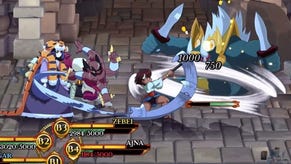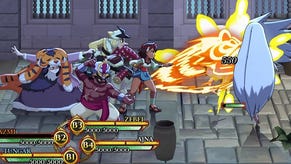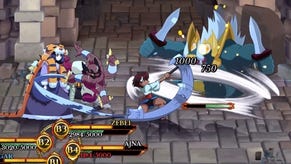Skullgirls dev explains why Indivisible costs $3.5m to make
"Bloodstained is $5m dollars. It's not $500k!"
Earlier this month Skullgirls developer Lab Zero Games launched an Indiegogo campaign for a new action-RPG called Indivisible. The campaign is struggling as in its first two weeks it's only raised $349,920 towards its $1.5m goal. That's only 23 per cent, and it has 27 days left to make the rest.
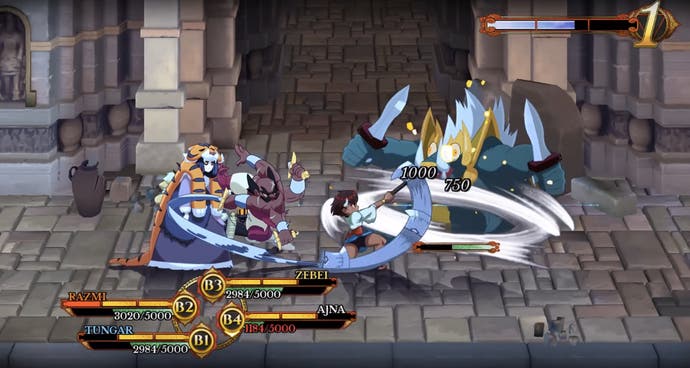
Lab Zero suspects the lack of funds have been spawned by a handful of misconceptions regarding how much a game costs to develop, what Lab Zero's arrangement with publisher 505 Games is, and the difference between making a demo and a full game.
Lab Zero's Mike Zaimont addressed all these matters very frankly on YouTuber JBgolden's stream over the weekend.
First off, there's the matter of the game's cost. Zaimont noted that the federal poverty line in the US is $20k. He also noted that Super Metroid's core team was 23 people. So paying those people the poverty level would be $460k annually. Super Metroid took three years to make, so that's $1.38m. Furthermore, that doesn't include things like an office, internet, dev kits, localisation, testing, marketing, etc.
"Now let's increase that to what a lot of people in parts of the United States consider to be a semi-decent/semi-crappy salary: $40k a year," Zaimont added. So now we get $2.76m. (Again, this doesn't include non-salary costs.)
"We know from making Skullgirls approximately how many people we will need to make Indivisible in the timeframe that we're looking at and it is more than 23 people," he said. For example, Skullgirls had around 70 art contractors. (That's why it looks so pretty.)
At any rate, once Zaimont calculated how many people would be working on the game across its estimated developer schedule, and included the non-salary costs mentioned above, it came out to $3.5m. "And that includes trying to do it in two years instead of three years by staffing up extra."
"$3.5m dollars is the real number it would take to make this game. It is not inflated or anything like that," he plainly stated.
Zaimont also clarified that just because publisher 505 Games is putting $2m into Indivisible, that doesn't the game will get made anyway. In fact, it's quite the opposite. It won't.
"After a lot of negotiation we were able to convince 505 to be nice and put in $2m of the $3.5m that we need, which is slightly over half, and take care of a lot of the other development costs like localisation and testing and marketing and stuff," he explained. "That means the actual $3.5m can go toward game development. Not extra expenses like backer rewards and the things we needed it to go toward with Skullgirls."
"They are a publisher. They are not our publisher," Zaimont added. "They are not acting in the traditional publisher role of funding the entire thing and taking the entire profit. They have given us a pretty dang good deal on the backend."
One of the stipulations to this agreement is that Lab Zero still needs to raise the other $1.5 on its own. "They are not putting in money unless we can raise this money," Zaimont said.
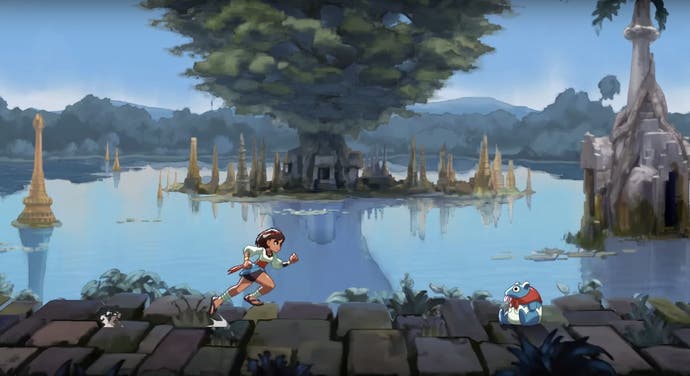
Zaimont finally addressed the misconception that because Lab Zero already has a pretty good-looking playable demo, that means the studio can obviously finish the game from here. That's not true.
"That prototype was the result of about three months and one week of super intense work by a very small team of people," Zaimont explained. "That does not translate into an entire RPG." He noted that the prototype has no cutscenes, no implementation of a plot, and only one unfinished level with a mere four playable characters. The final game will have "way the hell more."
"Having a prototype does not mean that the game is getting made in any way," he said. "It means that instead of spending three months making a campaign and trying to convince you that we could do something cool, we spent three months making something that we think is cool that you could play."
"We are trying to do this as honestly and normally as we possibly can. And we are meeting exactly the same resistance as if we hadn't tried to do that, which is really frustrating."
Zaimont then turned his attention towards other crowdfunding campaigns that have given people a misunderstanding of how much it costs to develop a video game.
"I'm kind of annoyed that so many crowdfunding drives at this point have had like 90 per cent of their funding from investors already and have just used it as an interest gauge, because that basically killed our ability to say 'we don't have a publisher and this is not an interest gauge.'"
He cited Bloodstained as an example of this practice, where people see its Kickstarter and think the game costs much less than it does. "Bloodstained is $5m dollars. It's not $500k!" he exclaimed. "They had $4.5m of funding already."
It's an enlightening rant that highlights a lot of our misconceptions about how much video games cost to develop and the troubles of communicating what should be an unusually transparent crowdfunding campaign. You can hear the full explanation in the video below.




